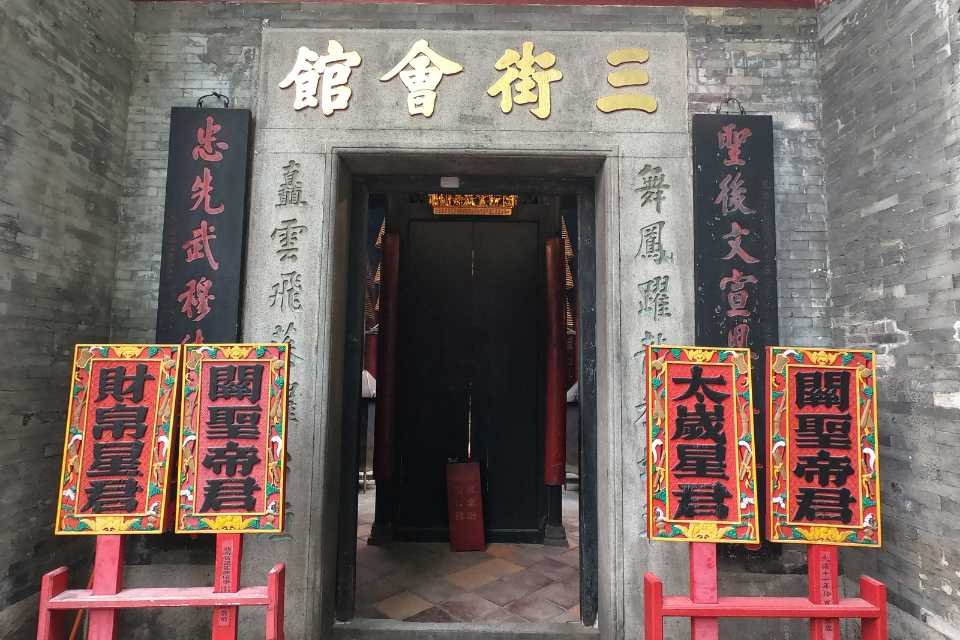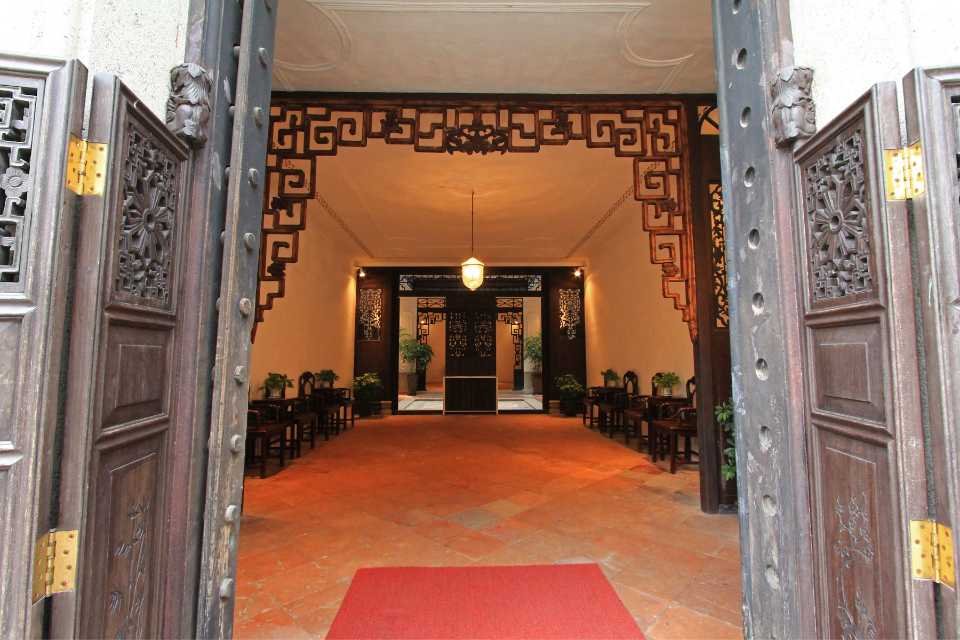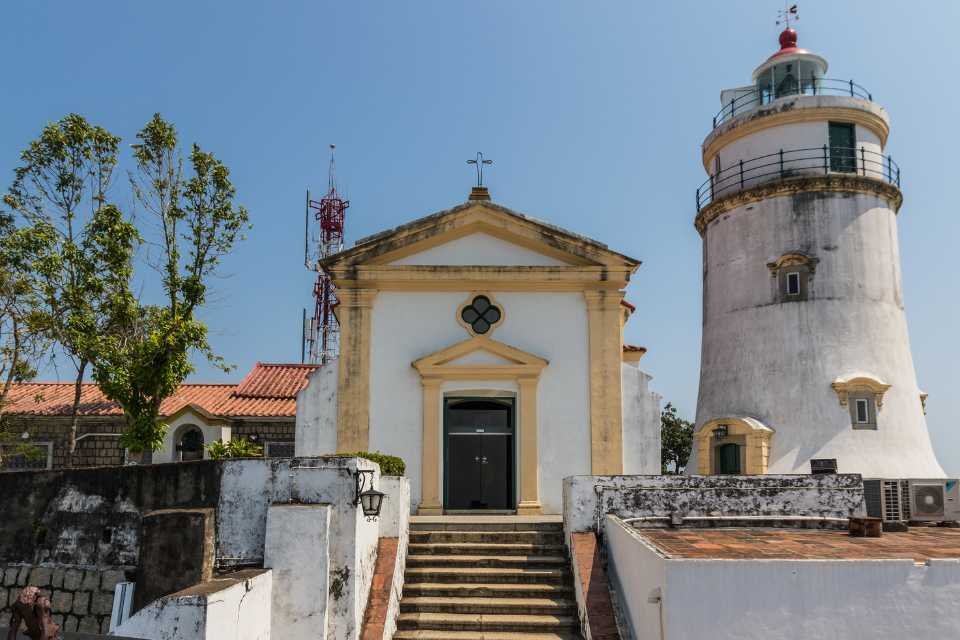The 20 best historic places to visit in Macau
Dive into Macau’s amazing past at these historic sites

Macao's history goes back nearly five centuries, making it one of the oldest colonial cities in the world. This region is full of historical treasures that give a glimpse into colonial Portuguese way of life.
Some of the historic architecture and cobbled streets in this area have been designated World Heritage Sites by the United Nations.
On July 15, 2005, UNESCO designated Macao's Historic Centre as a World Heritage Site, encompassing twenty-two structures and eight public spaces. Places that have lasted the test of time are a great way to learn about the city's rich history. These are some of the best spots to visit in Macao if you haven't already added them to your list.
1 of 20
Church of St. Paul
For centuries, Macao residents have referred to this spot as "the Ruins of St. Paul," which relates to the church of St. Paul (also known as "Mater Dei") that was destroyed by fire in 1835. A massive church was built there, and it was referred to as the "Vatican of the Far East".
It was reduced to its granite facade and an elaborate, 68-step stone staircase following a devastating fire in the building. Using the concept of heavenly ascension in mind, the Baroque façade is divided into five levels, where the horizontal base levels are Ionic, Corinthian and Composite, and the upper levels gradually narrow until they form a pediment at the top.
There are distinct oriental motifs coupled with religious and western aspects that reflect the global, regional, and local influences.
2 of 20
The A-Ma temple

A-Ma Temple is the oldest temple in Macau. Though it was completed in 1828, the original construction began around 1488. The ability to worship different deities in separate temple pavilions is what makes this temple unique.
For example, there are several pavilions dedicated to the worship of Guanyin, the Hall of Prayer, the Hall of Benevolence, and Zhengjiao Chanlin (a Buddhist pavilion). Complexes of folk beliefs from China's diverse culture are represented in the pavilion.
Craftsmanship and artistry are evident in features like the lattice windows, upturned ridges, roof charms, flush gable roof, and ornate porcelain. This looks like a typical Chinese temple at first glance, but the design is completely unique to A-Ma and only small elements are found elsewhere.
3 of 20
Mount Fortress
The Mount Fortress, one of Macau's most popular tourist sites, was built in 1622 to stave off a Dutch invasion of Macao. The fortress's main building was destroyed by a catastrophic fire, leaving only the fortress's flat, trapezoidal base. Currently, it's covered with lush vegetation, making it one of the ideal spots to take in the surrounding surroundings.
Tourists can learn about Macau's history and culture by visiting the Macao Museum, which was erected inside the fortress in 1989. Mount Fortress is located 52 metres above sea level on Mount Hill. There are about 8,000 square metres of fortress space in its trapezoidal design.
There are 9 metres of thick rammed earth walls at the top, which are further covered by a deep oyster shell stucco. The parapets have been crenellated and the two corners of the southeast wall feature watchtowers for the construction of 32 cannons. Fortress walls facing the Chinese mainland have no battlements, suggesting it was built to withstand attacks from the sea.
4 of 20
Sam Kai Vui Kun Temple

Built in 1750, Sam Kai Vui Kun was originally used by Chinese merchants as a gathering place. Ancient Chinese commander Kuan Tai, popularly known as "the God of Wealth," had a temple built in his honour here. It has a modest grey brick exterior and a roof with a total of nine ridges covered in glazed tiles. People still come to the temple to pray for luck and fortune even though it is no longer utilised for business gatherings.
5 of 20
St Joseph's seminary and church
To serve as a base for Jesuit missionary work in China, along with St. Paul's College, this seminary was established in the 18th century. When it was first built, the church next to the seminary was only second in size to the old Church of Mater Dei (Ruins of St. Paul's). The simple seminary is a stark contrast to the ornate Baroque church that sits adjacent to it.
A portion of St. Francis Xavier's arm bone, one of the most prolific missionaries in Roman Catholic history, rests in one of Macao's most revered religious relics. Numerous religious artefacts, like as sculptures and oil paintings, can be seen in the seminary.
6 of 20
Mandarin’s House

Zheng Guanying (known as 'The Son of Macao'), a notable Chinese writer and philanthropist, lived in Mandarin's House, a Chinese-style compound built in 1869. The complex runs more than 120 metres down Barra Street, with a gatehouse, courtyards, servants' quarters, and a master's quarters all occupying a combined 4,000 square metres.
Although the majority of the building's design is based on traditional Chinese architecture, there are a few Portuguese influences. The Mandarin’s house stands out from the other Western-style buildings that surround it, so you can’t miss it!
7 of 20
The Cathedral of Our Lady of the Nativity
The Cathedral was first built in 1622 as a tiny wooden church, but it underwent a series of renovations before becoming a stone construction in 1937. For decades, the Cathedral served as the seat of government for Macao's Roman Catholic Diocese and hosted a variety of large-scale religious events.
8 of 20
Holy House of Mercy

Since it was founded in 1569 by Macao's first bishop, this philanthropic institution has helped establish the city's first western-style medical clinic as well as numerous other social welfare institutions that are still in operation today. As Macao's Holy House of Mercy played a major role in supporting the orphans and widows of sailors who perished at sea, its involvement in the maritime commercial routes of the region and the world was intrinsically intertwined.
Senado Square's Holy House of Mercy has an ornately decorated arcaded facade and a prominent location. Columns and pilasters of various kinds are arranged between the archways to create passages for people at ground level, as well as a balcony on the top floor. Enliven the facade with a recurring pattern of pilasters that vary in height and width. The exterior of the structure, except for the granite pedestals on the bottom level, is painted white, creating a sense of calm and beauty. At first glance, the structure appears neoclassical, but the "imprisoned" columns at the ground level hint at a mannerist influence.
9 of 20
Dom Pedro V Theatre
It was China's first Western-style theatre, Dom Pedro V Theatre. The Portuguese used it as a major gathering place when it was constructed in 1860. With its rectilinear shape and portico front, the theatre is Neoclassical in style.
The exterior of the building is painted green to match the darker tones of the door and window frames, which are contained under a terracotta roof. The structure's colour contrasts with the surrounding yellow structures. As a cultural icon, the location is still used for major public events and festivities today.
10 of 20
Temple of Na Tcha

Na Tcha, the son of the mythological military commander Li Jing, is the deity of the temple, which was established in 1888 and is located near the Ruins of St. Paul's. Another example of Macao's multiculturalism and religious tolerance is the close proximity of a Chinese temple to the ruins of a cathedral.
The Na Tcha Temple is a one-room brick temple with a classic flush-gable roof and brick walls. The temple's exterior is drab, except for the murals on the porch and the ceramic animal ornaments on the roof, which serve both as adornment and as guardians.
11 of 20
Leal Senado Square
A World Heritage Site as part of the Historic Centre of Macao, this square is one of Macau's best-known landmarks. St. Dominic's Church is now surrounded by the Leal Senado building and the General Post Office.
In addition to the European-style buildings, there are a number of gift shops in the area where you may buy souvenirs for your family and friends!
12 of 20
Lou Kau Mansion

An eminent trader named Lou Kau is believed to have lived there in 1889, when the palace was erected. The large two-story grey-brick courtyard mansion has typical late Qing Dynasty architectural features and is laid out in a three-by-three grid with a symmetrical design.
It is divided into three main halls: the entrance hall (Men Guan hall), the tea hall (Sedan hall), and the senior hall (Tou hall). As visible in the windows embellished with oyster shells, carved brickwork and roof statuary, as well as the Portuguese-style coloured glass windows and false ceilings, there is a seamless integration of East and West influences.
13 of 20
Casa Garden
Manuel Pereira, a wealthy Portuguese businessman, lived at this mansion around 1770 when it was erected. East India Company's Macao offices were eventually rented out to house several of the company's most senior personnel in the building. With a focus on local and regional cultural issues and community involvement in its mission statement, the Oriental Foundation has made this facility its headquarters.
The Casa Garden's facade is painted white with red accents for visual interest. Arched windows and shutters adorn the building's exterior. The main hall of the mansion is adorned in a southern European style by a flight of granite steps that lead to the front door.
14 of 20
Guia Fortress, Chapel and Lighthouse

Colonial military fortifications built on top of Guia Hill in Macao in the 17th century have been preserved and are now open to the public. Fortress Guia Chapel, erected in 1622 and originally established by Clarist nuns, is now a museum.
Chinese and Western influences can be seen in its beautiful frescoes, which depict religious and mythical themes. For Macao's first modern lighthouse, which was established in the late 19th century, the exact coordinates of that lighthouse's exact location are the official geographic coordinates of Macau.
15 of 20
Maritime Museum of Macau
Macau's harbour has played an important role in the city's history as a major commercial station. A ship-shaped museum is located near Barra Pagoda, where the Portuguese first set foot in Indonesia. With its aquarium gallery and mock-ups of boats, notably the long, narrow dragon boats used during the Dragon Boat Festival, this museum is a must-see for maritime enthusiasts.
16 of 20
Lilau Square
Until recently, Macao's natural spring water came from the groundwater beneath Lilau. Lilau Square has a special place in the hearts of Macao residents, as evidenced by the saying, "One who drinks from Lilau never forgets Macao."
The Mandarin's House residential complex is a prominent example of a combination of western and Chinese urban and architectural principles in Macao's initial Portuguese residential quarters, with a characteristic Mediterranean ambience that includes some later Art Deco elements.
17 of 20
Taipa Village

Taiwan Village, Macau's East meets West character, is a magnificent illustration of Taipa's rich cultural heritage and historic beauty with its blend of Portuguese, Mediterranean and Chinese architectural elements. Museums, colonial churches, and Chinese temples coexist peacefully here, offering a refreshing change of pace from the casino.
18 of 20
The old city walls
Remains of the city's defence buildings, completed in 1569, are a vestige of an early Portuguese custom of constructing walls around their port cities in Africa and India. Among Macao's unique techniques and materials, chunambo stands out as a complex mixture of clay, dirt, sand, rice straw, crushed pebbles and oyster shells compacted in successive layers.
The proximity of this wall piece to Na Tcha Temple, the Ruins of St. Paul's, and Mount Fortress, as part of Macao's "acropolis" defence complex, is also important.
19 of 20
The Church of St. Dominic

Founded in 1587 by three Mexican Dominican priests from Acapulco, Spain, this church has ties to the Rosary Brotherhood. It was founded by three Dominican priests from Mexico. From here, on September 12th of that year, the first Portuguese newspaper published on Chinese land was published, A Abelha de Chine ["The China Bee"].
When three shepherd children in Fátima, Portugal, saw a vision of Our Lady of Fátima in 1929, this church decided to incorporate her into its liturgical service. The popular worship of Our Lady of Fátima spread from Macao to Shiu-Hing, Timor, Singapore, and Malacca as a result of this church's founding.
20 of 20
Moorish Barracks
Goa, a state in India that had been under Portuguese domination for four centuries, was selected as a source of strength for Macao's police force when the Moorish Barracks was established on Barra Hill in 1874.
With its brick and stone Mughal-inspired neoclassical structure intact, the building is now the headquarters of the Marine and Water Bureau. When the long veranda is lit up at night, it's a sight to behold with its pale yellow architecture with white accents.









